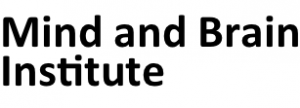How digital is man?
Tom Insel, the former director of the National Institute of Mental Health (NIMH) recently published a brief “viewpoint” with the title “Digital Phenotyping – Technology for a new Science of Behavior” in the prestigious Journal of the American Medical Association (JAMA) (JAMA 2017;318:1215-1216). In my post of May 19th, 2017 (currently not available), I have already described that Insel earlier this year left his former employer Alphabet (formerly Google) for the California-based Mindstrong Health, a company, according to its website, which is dedicated to “Transforming Brain Health: Better outcomes through measurement-based care.” In his article Insel now gets a free advertisement for his new employer.

What exactly is “digital phenotyping”? This again is described on Mindstrong’s website:
“Digital phenotyping is the core of our measurement approach. Digital phenotyping is simply assessment based on smartphone use. As smartphones have become ubiquitous, their increasing use provides an unprecedented opportunity to measure mood, cognition, and behavior – passively, objectively, and continuously.”
According to Insel “even though smartphone technology promises to transform many aspects of health care, no area of medicine is likely to be changed more by this technology than psychiatry. Digital phenotyping is the term now used for describing this new approach to measuring behavior from smartphone sensors, keyboard interaction, and various features of voice and speech.”
Sachin Jain and colleagues give a typical example of the application in their influential article “The digital phenotype”, which was published in 2015 (Jain et al., Nat Biotechnol 2015;33:462-463): “For a bipolar patient whose mania is manifested in rapid, uninterruptible speech or hypergraphia, their disease could be characterized by the frequency, length and content of participation in social media. Through these varied applications, digital phenotypes can help ensure that early manifestations of disease do not go unnoticed and allow the healthcare system to develop more nimble, targeted and prompt interventions.”
Insel states “Over the past 4 decades, behavioral expertise, once the strength of psychiatry, has diminished in importance as psychiatric research focused on pharmacology, genomics, and neuroscience, and much of psychiatric practice has become a series of brief clinical interactions focused on medication management. In research settings, assigning a diagnosis from the Diagnostic and Statistical Manual of Mental Disorders has become a surrogate for behavioral observation. In practice, few clinicians measure emotion, cognition, or behavior with any standard, validated tools.”
Do we really believe all this? Can the complexities of human behavior, and even more so of psychiatric disorders, be depicted by traces we leave with our smartphones? While we do not have a consistent concept of “psychosis”, how can we believe that “semantic coherence from speech samples [is] a predictor of psychosis”? While we have no clue to explain the enormous heterogeneity of mood disorders, how can we believe that “variation in several sensor measures [are] a correlate of mood ratings”? Insel a couple of months ago admitted that in his 13 years as the director of the NIMH he didn’t “think we moved the needle in reducing suicide, reducing hospitalizations, improving recovery for the tens of millions of people who have mental illness. I hold myself accountable for that.” Now he presents an even more reductionist concept of psychiatric disorders than the one that is expressed in the Research Domain Criteria (RDoC).
Insel comes to the conclusion: “After 40 years of psychiatry becoming more mindless than brainless, perhaps digital phenotyping will help the pendulum swing back toward a fresh look at behavior, cognition, and mood. It has been said that new directions in science are launched by new tools much more often than new concepts. In this case, a tool that is inexpensive and ubiquitous may change the direction of the field.” My personal belief is that “digital phenotyping” might an interesting tool to better understand certain aspects of human behavior, but it is far from being able to “change the direction of the field”. Such a direction would not only be more mindless but even more “human-less”.


